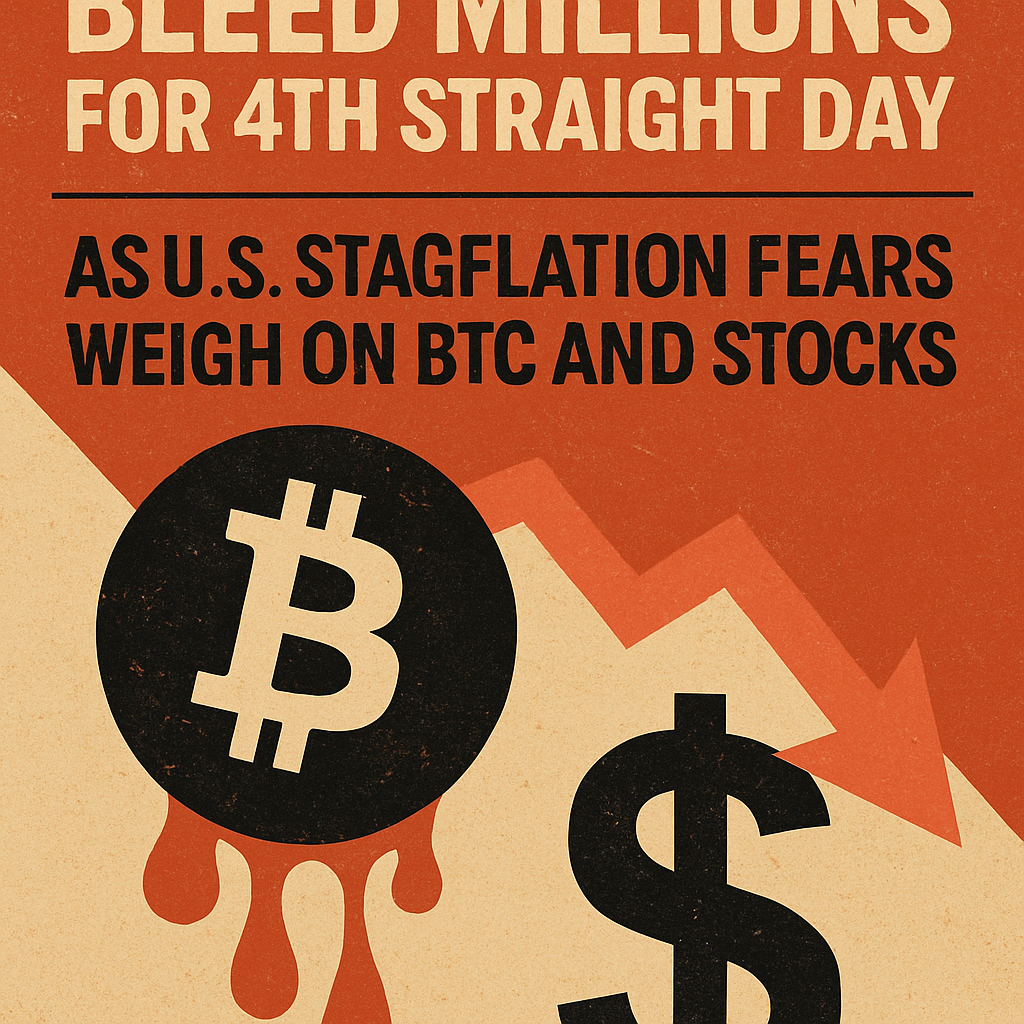U.S.-listed spot bitcoin exchange-traded funds recorded a cumulative net outflow of $196 million on Tuesday, marking the fourth straight day of withdrawals, driven by investor concerns over stagflationary pressures.
The outflow streak began last Thursday and accelerated after the U.S. ISM Non-Manufacturing PMI report signaled tariff-driven inflation and slowing service sector growth, dampening risk appetite in financial markets.
During the same period, ether ETFs received inflows totaling $73.22 million, likely boosted by recent SEC guidance clarifying that staking activities under certain conditions do not constitute securities offerings.
Bitcoin’s price dipped over 1% to trade near $112,650 following the data release, while the Nasdaq Composite reversed early gains, highlighting the correlation between equity and crypto markets.
Fidelity’s FBTC and BlackRock’s IBIT accounted for the majority of ETF outflows, according to data from SoSoValue, reflecting a rotation away from bitcoin toward other assets amid macroeconomic uncertainty.
LondonCryptoClub analysts on X attributed the ETF outflows to a “stagflationary mix” that could delay Federal Reserve rate cuts, prolonging higher interest rate expectations and weighing on risk assets.
Options linked to the Secured Overnight Financing Rate imply potential rate cuts in the remaining three Fed meetings this year, with markets pricing in roughly 75 basis points of easing by year-end.
Despite the outflows, spot bitcoin ETFs maintain substantial assets under management, with cumulative net inflows exceeding $39.9 billion since launch.
Ether ETF volumes, while smaller, have shown resilience, suggesting diversified investor interest across major crypto tokens in periods of heightened volatility.
Traders and analysts remain focused on upcoming U.S. economic reports, including nonfarm payrolls, for further clarity on the Fed’s policy trajectory and its impact on cryptocurrency valuations.
The extended ETF outflow trend underscores the evolving relationship between macroeconomic indicators and digital asset fund flows, shaping short-term price dynamics.
Market participants will monitor ETF flow data closely as a barometer of institutional sentiment and potential hedging strategies against inflationary pressures.
Meanwhile, discussions continue around expanding crypto derivatives offerings, with market makers exploring options products to provide additional risk management tools to professional investors.
Overall, the ETF flow patterns reflect a cautious stance by institutional investors, balancing exposure to crypto upside against the backdrop of global economic uncertainty.

Comments (0)